Scalp Micropigmentation Regrets: Understanding, Coping, and Moving Forward
Scalp Micropigmentation Regrets. Scalp micropigmentation (SMP) has gained popularity as a non-invasive solution for individuals experiencing hair loss. Offering the promise of a fuller head of hair and restored confidence.
While many people are satisfied with the results of SMP. Others may find themselves experiencing feelings of regret or dissatisfaction after undergoing the procedure. In this blog, we’ll delve into the topic of scalp micropigmentation regrets and explore the reasons behind them. Looking later at coping strategies, and steps to fix regets and tips for moving forward.
Understanding Scalp Micropigmentation:
Scalp micropigmentation is a cosmetic procedure that involves the application of specialized pigments to the scalp to simulate the appearance of hair follicles. It is commonly used to camouflage baldness, thinning hair, or scarring on the scalp, providing the illusion of a closely shaved hairstyle or fuller hair density.
SMP is typically performed over multiple sessions by a trained technician using fine needles to deposit pigment into the scalp’s upper layers.
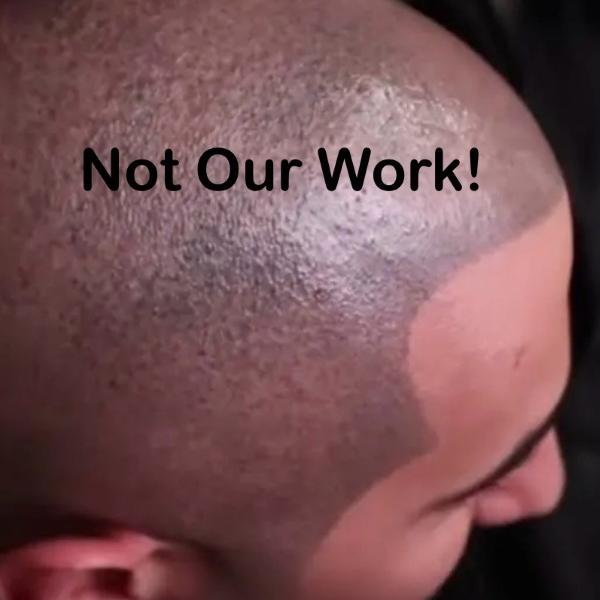
Reasons for Scalp Micropigmentation Regrets:
Despite its popularity and positive outcomes for many individuals, scalp micropigmentation regrets can occur for various reasons:
- Unrealistic Expectations: Some individuals may have unrealistic expectations about the results of SMP. When the outcomes do not meet these expectations, feelings of disappointment or regret may arise.
- Suboptimal Results: In some cases, SMP may not achieve the desired outcome due to factors such as incorrect pigment selection, improper technique, or poor healing. Suboptimal results, such as uneven pigmentation, unnatural hairline design, can contribute to feelings of regret or dissatisfaction.
- Social or Emotional Factors: External factors such as societal pressures, negative feedback from others due to poor treatment results.
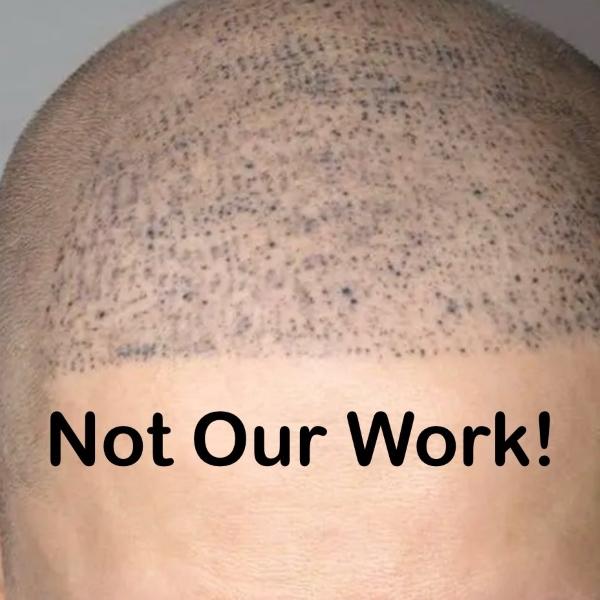
Coping Strategies:
If you’re experiencing feelings of regret or dissatisfaction after undergoing SMP, it’s essential to acknowledge and validate your emotions. Coping strategies that may help include:
- Seeking Support: Reach out to supportive friends, family members, or online communities who can offer understanding, empathy, and encouragement during this time.
- Open Communication: If you’re feeling dissatisfied with the results of SMP, consider discussing your concerns openly and honestly with your SMP technician. They may be able to offer solutions or adjustments to improve the outcomes and address your specific concerns.
- Managing Expectations: Reflect on your initial expectations for SMP and consider whether they were realistic or achievable. Adjusting your expectations to align with outcomes of SMP can help reduce feelings of disappointment or regret.
Moving Forward:
Moving forward after experiencing scalp micropigmentation regrets may involve a combination of acceptance, adjustment. Whilts taking proactive steps to address your concerns. Remember that feelings of regret are valid and normal,they do not define your worth or identity.
If you’re considering scalp micropigmentation or have experienced regrets after undergoing the procedure. It’s essential to approach the decision with careful consideration, realistic expectations, and thorough research. Consulting with a qualified SMP technician will provide valuable insights, guidance, and support to help you make informed decisions about your hair restoration journey.
Remember, your journey to self-confidence and satisfaction with your appearance is unique to you. There is no one-size-fits-all solution. By prioritizing self-care, seeking support, and exploring options that align with your needs and preferences. You can navigate scalp micropigmentation regrets with grace, resilience, and empowerment.
Correcting Scalp Micropigmentation
Correcting scalp micropigmentation (SMP) that has gone wrong can be a challenging process, but there are several options available depending on the nature and extent of the issues. Here are some steps to consider for correcting SMP gone wrong:
- Consultation with a Qualified SMP Specialist: The first step is to schedule a consultation with a qualified scalp micropigmentation specialist who has experience in correcting SMP procedures. During the consultation, discuss your concerns, explain what you perceive as having gone wrong. Be sure to express your desired outcome. The specialist will evaluate your scalp and SMP treatment and recommend appropriate corrective measures.
- Assessment of SMP Issues: The specialist will carefully assess the SMP treatment to identify any issues that need correction. Common issues may include uneven pigmentation, unnatural hairline design, excessive density or pigment fading. Understanding the specific issues will help determine the best course of action for correction.
- Options for Correction: Depending on the nature of the issues, corrective measures may involve one or more of the following options:
- Pigment Removal: If the pigmentation is uneven or too dark, pigment removal techniques such as laser treatment may be used to lighten or remove the unwanted pigment.
- Color Correction: Adjustments to the pigment color can be made to correct any inconsistencies or unnatural tones. This may involve adding or blending different pigment shades to achieve a more natural appearance.
- Hairline Redesign: If the hairline design is unnatural or poorly defined. The specialist can redesign the hairline to create a more aesthetically pleasing and realistic look.
- Scar Camouflage: For individuals with visible scarring from SMP or other scalp issues, scar camouflage techniques can be used to blend the scars with surrounding skin and pigment.
- Density Adjustment: If the SMP treatment resulted in overly dense or “blotchy” areas. The specialist can adjust the density of pigment to create a more uniform and natural appearance.
- Customized Treatment Plan: Based on the assessment and corrective options. The specialist will develop a customized treatment plan tailored to your specific needs and goals. The plan may involve multiple sessions spaced over several weeks or months to achieve optimal results.
- Follow-Up and Maintenance: After the corrective treatment sessions, follow any post-treatment care instructions provided by the specialist. To ensure proper healing and long-term results. Additionally, schedule regular follow-up appointments for monitoring and maintenance as needed to address any further concerns or adjustments.
- Patience and Realistic Expectations: Correcting SMP that has gone wrong requires patience and realistic expectations. Understand that achieving the desired outcome may take time and multiple treatment sessions. Trust in the expertise of the specialist and be open to the process of correction and improvement.
- Research and Due Diligence: When seeking corrective treatment for SMP, it’s crucial to research and choose a qualified and experienced specialist who specializes in corrective procedures. Look for reviews, before-and-after photos, and credentials to ensure you’re entrusting your scalp to a skilled professional.
Correcting SMP that has gone wrong requires specialized knowledge, skill, and experience. By working with a qualified SMP specialist and following a customized treatment plan. You can address any issues and achieve a more natural and satisfactory outcome.
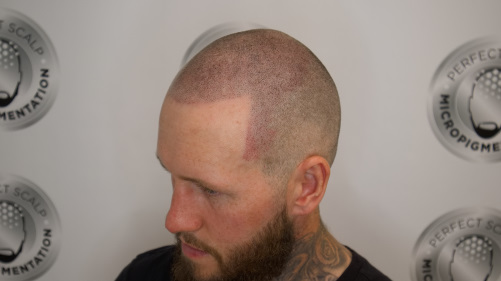
How To Choose An Artist To Fix Your SMP Issues?
Choosing a reputable scalp micropigmentation (SMP) artist is crucial for achieving safe, effective, and natural-looking results. Here are some essential factors to consider when selecting an SMP artist:
- Qualifications and Training: Look for an SMP artist who has received comprehensive training and certification from reputable institutions or organizations specializing in scalp micropigmentation. Ensure they have the necessary skills, knowledge, and expertise to perform SMP procedures safely and effectively.
- Experience: Experience is key when it comes to SMP. Seek out an SMP artist with a proven track record of successful treatments and a portfolio of before-and-after photos showcasing their work. Pay attention to the quality, consistency, and naturalness of the results in their portfolio.
- Client Reviews and Testimonials: Read client reviews and testimonials to gauge the satisfaction levels of past clients. Look for positive feedback regarding the artist’s professionalism, communication, expertise, and the quality of results. You can find reviews on the artist’s website, social media pages, or third-party review platforms.
- Consultation Process: Schedule a consultation with the SMP artist to discuss your goals, concerns, and expectations. Pay attention to how the artist communicates, listens to your needs, and provides personalized recommendations. A reputable SMP artist will take the time to understand your unique situation and develop a customized treatment plan tailored to your preferences.
- Hygiene and Safety Standards: Ensure that the SMP artist follows strict hygiene and safety protocols to minimize the risk of infection and ensure a sterile treatment environment. Ask about their sterilization procedures, use of disposable needles and equipment, and adherence to industry standards and regulations.
- Transparent Pricing and Policies: Choose an SMP artist who provides transparent pricing information upfront. With clearly outlined policies regarding treatment procedures, aftercare, and potential touch-up sessions. Avoid artists who offer significantly lower prices or discounts without clear explanations! This may indicate subpar quality or lack of experience.
- Before-and-After Photos: Request to see a comprehensive portfolio of before-and-after photos showcasing a range of SMP treatments performed by the artist. Pay attention to the diversity of clients, hair types, and SMP styles. In order to ensure that the artist can achieve the desired results for your specific needs.
- Communication and Comfort Level: Trust your instincts and assess your comfort level with the SMP artist during the consultation process. Choose an artist who listens attentively, addresses your concerns, and communicates openly and honestly. Building a positive rapport with your SMP artist is essential for a successful treatment experience.
- Ongoing Support and Follow-Up: Inquire about the artist’s policies regarding follow-up appointments, touch-up sessions, and ongoing support after the initial treatment. A reputable SMP artist will offer post-treatment care instructions, guidance on maintenance, and accessibility for any questions or concerns that may arise.
By carefully evaluating these factors and choosing a reputable SMP artist who meets your criteria, you can ensure a positive and satisfying scalp micropigmentation experience. Remember to prioritize quality, expertise, and safety when making your decision, as the choice of SMP artist plays a significant role in the success of your treatment.
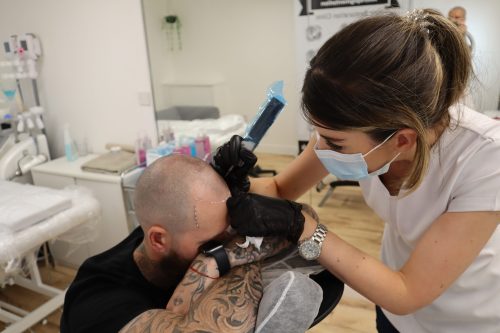
Laser Removal For Scalp Micropigmenation Regrets
Laser removal for scalp micropigmentation (SMP) is a procedure used to lighten or remove unwanted pigment from the scalp. It may be necessary in cases where the SMP treatment results in undesirable outcomes. Such as uneven pigmentation, incorrect pigment color, or the need for complete removal of the SMP.
Here’s an overview of laser removal for SMP:
- How it Works: Laser removal for SMP involves the use of specialized laser devices that emit high-intensity light energy. The laser energy targets the pigment particles in the scalp. Breaking them down into smaller fragments. Over time, the body’s natural processes eliminate these fragmented pigment particles, gradually lightening or removing the SMP.
- Types of Lasers: Several types of lasers may be used for SMP removal, including Q-switched lasers and picosecond lasers. These lasers deliver precise wavelengths of light energy that specifically target the pigment without damaging the surrounding skin or tissue.
- Safety Considerations: Laser removal for SMP should only be performed by qualified laser technicians, who have received specialized training in laser procedures. Proper safety precautions, including eye protection are essential to minimize the risk of adverse effects.
- Number of Sessions: The number of laser removal sessions needed depends on various factors. Including the depth and density of the SMP, the type of pigment used, and individual skin characteristics. Multiple sessions spaced several weeks apart may be necessary to achieve the desired level of pigment lightening or removal.
- Post-Treatment Care: After laser removal sessions, it’s essential to follow any post-treatment care instructions. This may include avoiding sun exposure, applying soothing creams or ointments, and protecting the treated area from trauma or irritation.
- Potential Side Effects: Laser removal for SMP is generally safe when performed by a qualified professional. However, some individuals may experience temporary side effects such as redness, swelling, blistering, or changes in skin texture. These side effects typically resolve on their own within a few days to weeks.
- Realistic Expectations: It’s important to have realistic expectations about the outcomes of laser removal for SMP. Complete removal of SMP may not always be possible, especially for deeply pigmented or densely applied SMP. In some cases, lightening the pigment to a more acceptable shade may be a more achievable goal.
- Consultation and Evaluation: Before undergoing laser removal for SMP, schedule a consultation with a qualified professional to discuss your goals, concerns, and suitability for the procedure. The professional will evaluate your scalp, assess the SMP, and recommend the most appropriate treatment approach based on your individual needs.
Overall, laser removal is an effective option for correcting or lightening unwanted SMP pigment. However, it’s essential to choose a qualified professional.Ffollow proper safety protocols, and maintain realistic expectations about the outcomes. With proper care and oversight, laser removal can help individuals achieve their desired aesthetic results and regain confidence in their appearance.
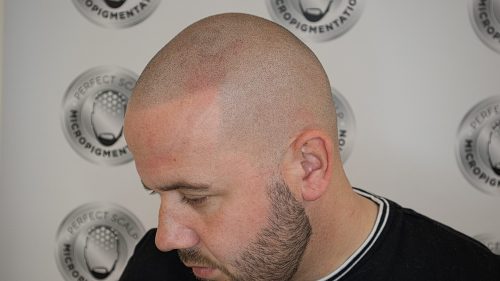
Scalp Micropigmentation Regrets Conclusion:
In conclusion, if you find yourself experiencing regrets or dissatisfaction with scalp micropigmentation (SMP), it’s important to remember that you’re not alone! There are options available to address your concerns and move forward. While SMP can be a transformative solution for many individuals seeking to conceal hair loss and restore confidence. It’s essential to approach the procedure with careful consideration and realistic expectations.
If you’re dissatisfied with the results of SMP, one option is to seek out a reputable SMP provider who specializes in corrective procedures. A qualified and experienced SMP specialist can assess your concerns, discuss your goals, and develop a personalized treatment plan to address any issues and achieve a more satisfactory outcome. By choosing a reputable provider with a proven track record of success, you can increase the likelihood of achieving natural-looking and long-lasting results that meet your expectations.
Alternatively, if you’re considering removing SMP altogether, laser removal may be an option worth exploring. Laser removal techniques can effectively lighten or remove unwanted pigment from the scalp, providing a clean canvas for future hair restoration treatments or aesthetic preferences. However, it’s crucial to seek out a qualified and experienced laser technician who specializes in SMP removal to ensure safe and effective results.
Ultimately, whether you choose to seek corrective treatment with a reputable SMP provider or undergo laser removal. The key is to prioritize your safety, satisfaction, and overall well-being. Take the time to research and carefully evaluate your options. Consult with qualified professionals, and make an informed decision that aligns with your individual needs and goals.
Remember that experiencing regrets or dissatisfaction with SMP is normal, and seeking out solutions is a proactive step toward reclaiming your confidence and moving forward with positivity. With the right support, guidance, and expertise, you can navigate SMP regrets with resilience, self-compassion, and the determination to achieve the results you desire.

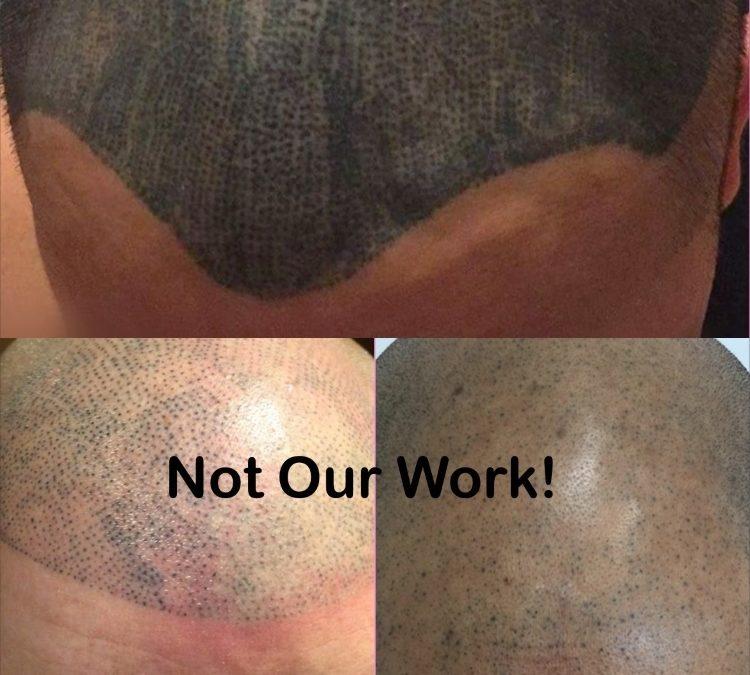
Recent Comments